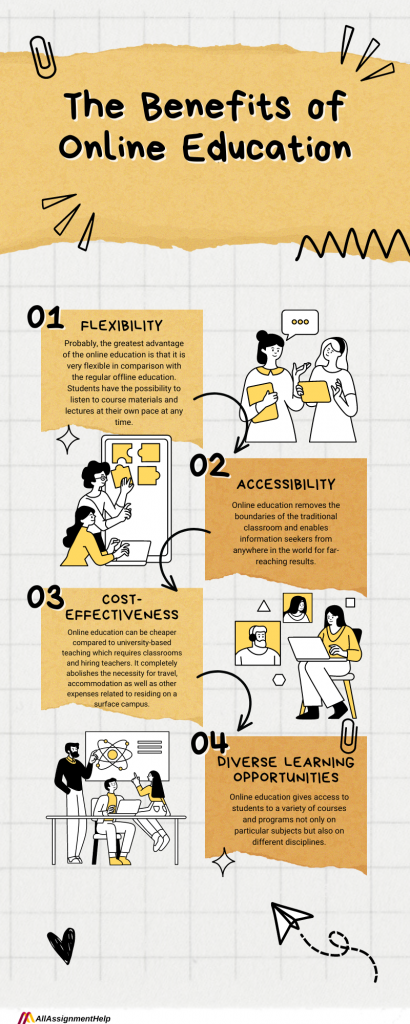Table of Contents
The world has been hit by the COVID-19 pandemic, which has provoked a massive change in learning dynamics at the global level. Basically, it has changed the traditional way of learning or education like never before Schools, colleges, and universities had to struggle to adapt to a world of physical distance, online work, and virtual contact while the entire world struggled to stop the disease from spreading. Consequently, there was great change to the method of transfer of knowledge either through online learning or utilizing technology to make learning continuous while still putting the health and safety of students and teachers on top priority.
The pandemic has had a significant impact on how technology is used in education now, and increasing the adoption of digital tools, online platforms, and virtual classrooms. Besides revolutionizing the way knowledge is gained and spread, this change highlights issues with equality and access. It is also evident that there are currently significant differences in technology and internet connectivity.
To assist you in understanding how people used to learn in COVID outbreaks and post-COVID, experts at allassignmenthelp have carefully curated this blog. The world’s way of life has been continuously impacted by the pandemic. The world of education will evolve in the future.
Impacts On Learning After Covid-19 Outbreak
Globally, the COVID-19 pandemic has had a tremendous effect on learning dynamics and has led to major modifications in educational practices and institutions. Among the noteworthy changes are:
Developing new digital competencies
The epidemic has caused a shift in thinking, which will have an impact on how people receive training and pick up new skills at work and educational institutions. The pandemic and the need for more remote and work-from-home choices have led to a replacement of traditional instructional design with more contemporary ideas.
The use of technology in teaching has increased as a result of the pandemic. As a way to provide instruction, educate students, and promote collaboration, digital materials, e-learning platforms, educational apps, and virtual classrooms have become essential tools.
Shift to Remote Learning
A huge number of schools were closed and social distance measures made it near impossible to attend physical classes. This led to enormous shifts in learning to online lessons. The world’s schools and universities have made readiness for online platforms, video conferencing tools, and digital resources as standard learning options. Adapting to hybrid or blended learning models, mixing in-person instruction and online interactions, is not an exception in educational programs either. This strategy permits more flexibility and adaptability in learning.
As you can see, learning online is nothing new these days—in fact, many students prefer it so they can concentrate on their other obligations and responsibilities. Since they have never learnt this way before, very few students are terrified of online learning. Thus they require help. But you don’t worry, as the epidemic changed not only how people learned, but also how they received assistance or direction from others. Yes, now you can ask the online experts to take your online classes for you and they will guide you so well.
Changing perspectives
The pandemic not only affected education but also impacted workplace practices. It has been said for a long time that most organizations cannot afford to allow employees to work from home on a large scale. For what amount of time have we been informed that receiving instruction in person is the only “authentic” method of learning? Both of those statements are untrue, as the pandemic has shown.
Many businesses had to swiftly adjust to the new reality of remote working and learning. Fortunately, many of them have done so. Even though some firms will always require in-person communication, one of the long-term effects of COVID-19 will be the end of the notion that “face-to-face is best” for many professions in the majority of white-collar industries.
Change in Evaluation and Assessment
Exams and routine tests are examples of traditional means of assessment that have been reevaluated in considering the issues presented by the pandemic. To effectively evaluate student learning in remote or hybrid settings, educators are investigating different methods such as project-based assessments, portfolios, and authentic assessments.
Online tests are not a new idea; nevertheless, their use was restricted prior to the pandemic. However, this new approach is already widely used by institutions and schools. Many students may find it difficult since they have never taken an online exam before or because they don’t have enough time allotted for it. But don’t worry, we advise you to get assistance from professionals in online exams. They can take your online exam on your behalf. The nicest thing about this popular trend is that they guarantee you will pass with high grades.
All things considered, the COVID-19 epidemic has significantly changed the dynamics of learning, forcing academic institutions to adapt and develop to satisfy the demands of students in a world growing more digital and unpredictable.
The Benefits of Online Education
Online education is the top choice for many older as well as young learners thanks to the plethora of benefits which this form of education offers.

1. Flexibility
Probably, the greatest advantage of online education is that it is very flexible in comparison with regular offline education. Students have the possibility to listen to course materials and lectures at their own pace at any time. This way, they can study better when they have free time, for example, when they want to study around their job, family and other commitments. This flexibility causes Online Education to be especially suitable for working experts, parents and most active people.
2. Accessibility
Online education removes the boundaries of the traditional classroom and enables information seekers from anywhere in the world for far-reaching results. This accessibility is a source of opportunities for individuals, that may not be able to physically attend the main learning institutions because of the location, or their immobility of them.
3. Cost-effectiveness
Online education can be cheaper compared to university-based teaching which requires classrooms and hiring teachers. It completely abolishes the necessity for travel, accommodation as well as other expenses related to residing on a surface campus. Furthermore, many online classes and programs often are less expensive than in-person courses or programs.
4. Diverse Learning Opportunities
Online education gives access to students to a variety of courses and programs not only on particular subjects but also on different disciplines. It doesn’t matter if you want to take a degree, discover a skill or boost your career. For all your needs and desires online courses do exist.
5. Personalized Learning
In most cases, online learning comes with a great opportunity to focus on the individual’s needs. Students may work on their own terms with the opportunity to go back over difficult ideas and learn with a choice of learning styles that will serve their needs the best. Moreover, the bulk of the online courses have interactive aspects like quizzes and multimedia tools incorporated into them to help students learn better and become more involved.
Online education happens to be an easy, comfortable, and financially savvy way for people to meet their educational and professional purposes, when it doesn’t matter if they are restricted by their circumstances or location.
Read Also: Pay Someone to Write My Essay for Me: Hire Professional Writers for Help
Rise of Online Courses That Gain Students’ Attention After COVID
The COVID-19 epidemic has caused a surge in demand for online learning platforms and various educational institutions, boosting the growth of virtual courses. Ever since COVID-19, online courses have been more and more popular and attention-grabbing. The courses listed below have become more popular since COVID:
Coursera
Coursera offers courses from top universities and institutions worldwide. Examples of courses are:
- Machine Learning by Stanford University
- Financial Markets by Yale University
- Python for Everybody by the University of Michigan
- Social Psychology by Wesleyan University
edX
Founded by Harvard University and MIT, edX offers courses from universities, institutions, and industry partners. Examples are:
- Introduction to Computer Science by Harvard University
- Data Science MicroMasters by UC San Diego
- Introduction to Artificial Intelligence by Columbia University
- Introduction to Project Management by the University of Adelaide
Khan Academy
Khan Academy offers free courses in math, science, economics, humanities, and more. Examples are:
- Algebra I
- Biology
- AP World History: Modern
- Microeconomics
These constitute only a handful of the numerous online learning platforms and the broad range of courses they provide. You can choose courses covering everything from academic disciplines to professional skills and personal development, depending on your interests and goals.
Read Also: Technology in Students’ Lives: A Game-Changing Element
FAQs
| Q: How has the pandemic affected educators? A: Teachers have adopted flexible learning models like combined or hybrid learning, participated in professional development for online instruction, and embraced technology. |
| Q: What steps have been taken to guarantee the safety of students throughout the pandemic? A: To reduce the danger of COVID-19 transmission, schools have put in place health and safety procedures that include physical separation, improved cleaning, and remote assessments. |
| Q: What impact has the pandemic had on the wellbeing of students? A: The pandemic’s effects on isolation, disturbed habits, and uncertainty have had an adverse effect on students’ mental health. Schools have concentrated on offering resources and support services to deal with these issues. |
| Q: What challenges has the pandemic presented for learning? A: Access to technology, the digital divide, keeping students engaged in virtual environments, and making sure all students have fair access to learning opportunities are among the difficulties. |
